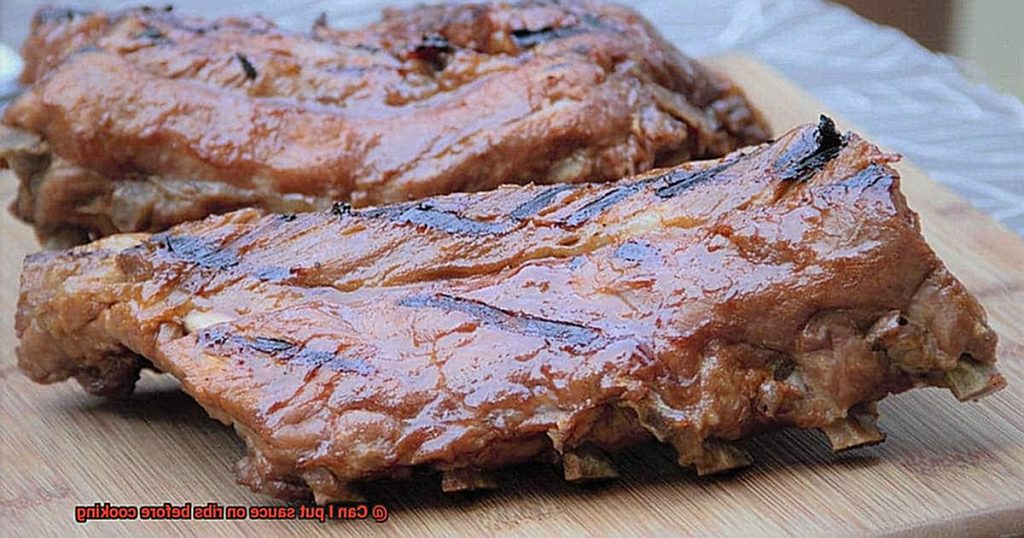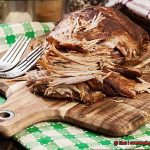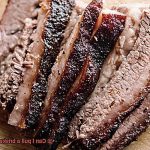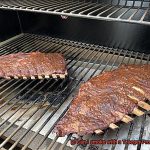Now, we’re about to embark on a finger-lickin’ adventure into the world of ribs. But hold up, before you fire up that grill or preheat the oven, let’s tackle an important question: Can I slather sauce on my ribs before cooking?
Well, my friends, you’ve stumbled upon the ultimate BBQ debate. Whether you’re a saucy aficionado or a meat purist who believes in letting those flavors shine through, this topic has caused some serious mouth-watering disagreements.
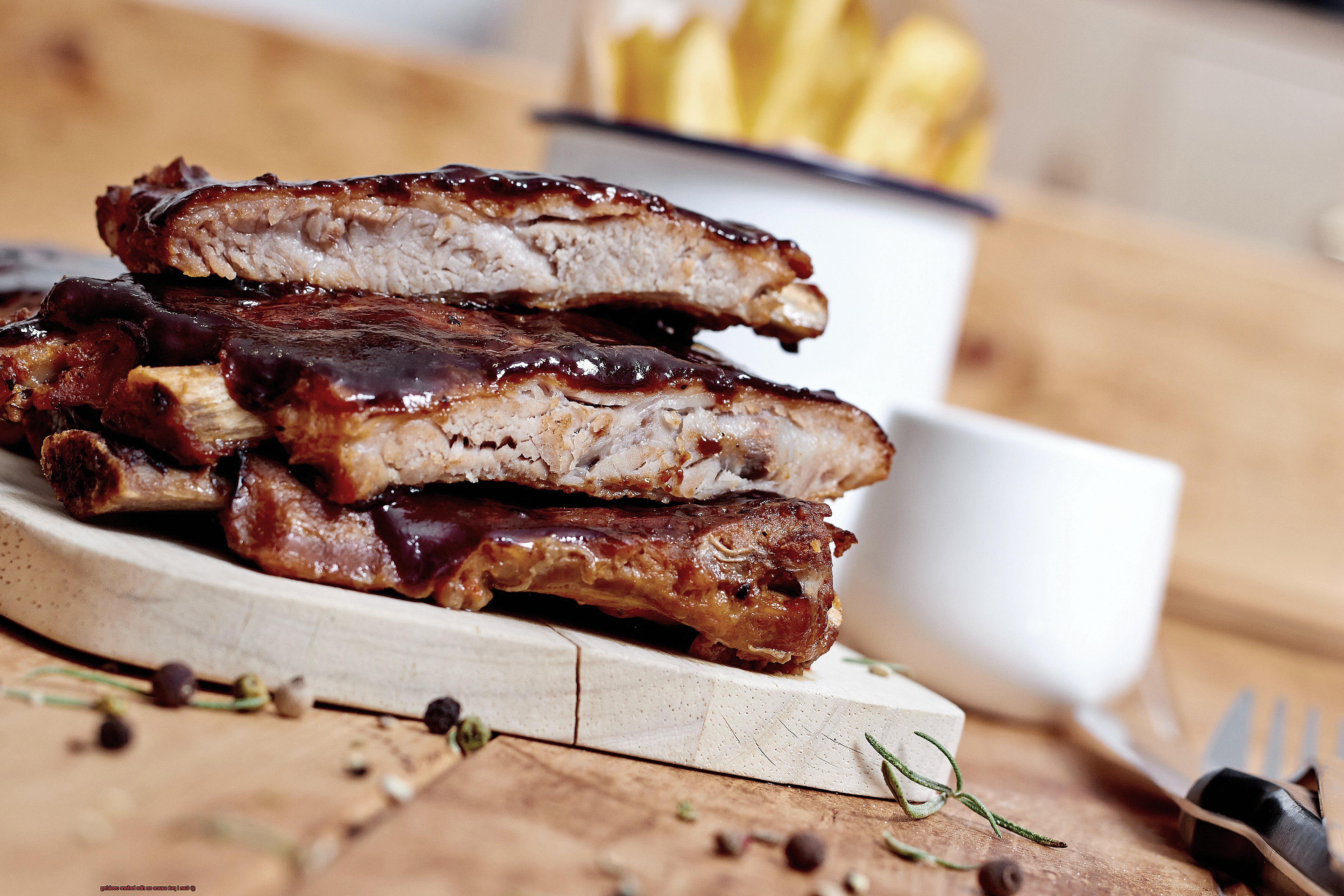
So grab a napkin – because things are about to get sticky and oh-so-delicious.
Contents
The Debate: To Sauce or Not to Sauce Before Cooking?
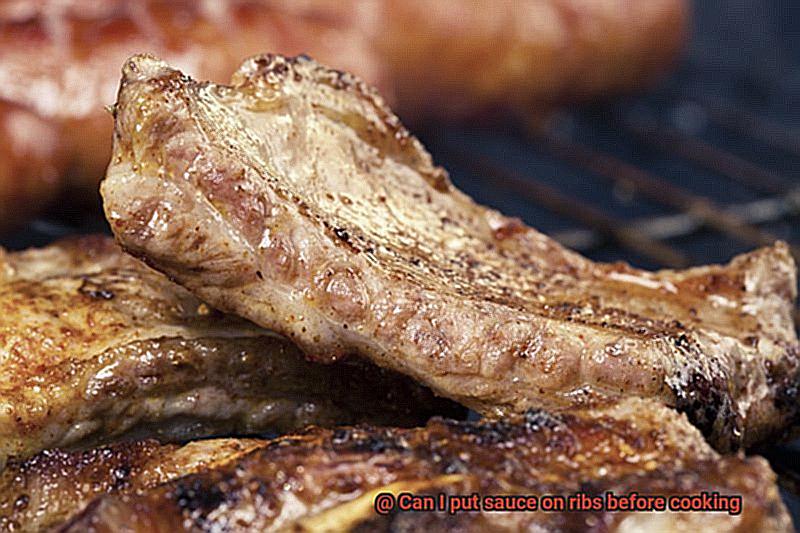
The sizzling debate of whether to sauce or not to sauce before cooking ribs has ignited passionate discussions among grill enthusiasts. As with any culinary debate, there are valid points on both sides of the argument. So, let’s dive into the juicy details and explore the different perspectives.
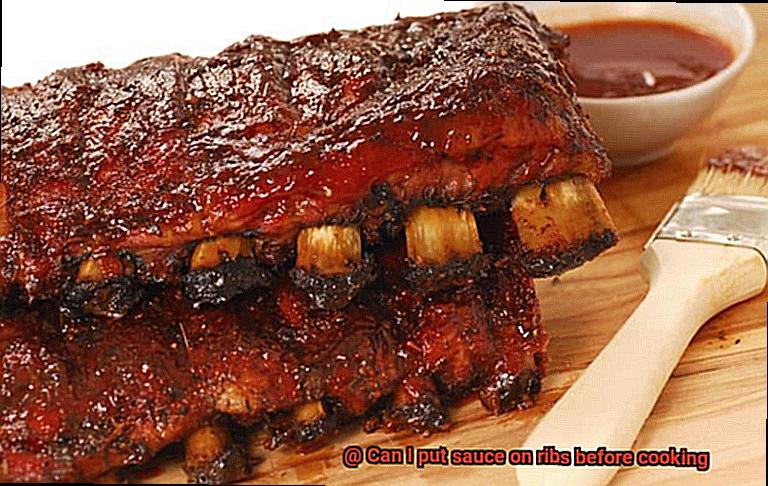
Proponents of saucing before cooking argue that it allows the flavors to permeate the meat as it cooks, resulting in a tender and flavorful end product. By marinating the ribs in the sauce for a few hours or even overnight, you can enhance the flavor profile even further. Plus, saucing before cooking creates a caramelized outer layer that adds depth and complexity to each mouthwatering bite.
However, opponents raise concerns about burning or charring the sauce when applied too early. They suggest applying the sauce towards the end of the cooking process, allowing it to glaze and stick to the ribs without sacrificing taste. Timing is crucial here, especially when dealing with thicker sauces that have a higher sugar content. These types of sauces are more prone to burning when exposed to direct heat for an extended period.
So, where does that leave us? It ultimately boils down (pun intended) to personal preference and desired outcome. If you’re someone who loves an intense flavor profile, saucing before cooking might be your go-to technique. On the other hand, if you prefer a subtler taste with a sticky glaze, applying sauce towards the end of cooking might be your ticket to rib nirvana.
Of course, regardless of when you choose to sauce your ribs, there are a few key tips to keep in mind:
- Cook your ribs low and slow: This ensures tenderness as the collagen in the meat breaks down slowly, resulting in juicy and succulent ribs.
- Monitor temperature: Closely watch your grill or smoker’s temperature to prevent burning or charring. Adjust the cooking times and temperatures accordingly to achieve the desired level of doneness.
Alternative Methods for Applying Sauce to Ribs
Then you’ve probably come across the age-old debate of whether to sauce your ribs before cooking. While traditionalists argue that the sauce should be applied after grilling, there are alternative methods that can elevate your rib game to new heights. Let’s dive into these saucy alternatives and find out which one will make your taste buds sing.
First up, we have the “mop and flip” technique. This method involves using a basting brush or mop to apply the sauce onto the ribs while they are cooking on the grill. By applying the sauce in layers and flipping the ribs, you ensure that every bite is coated in a heavenly blend of flavors. This method is perfect for those who crave a saucy, moist rib experience.
Next on our list is the marinade injection method. This involves using a marinade injector to inject the sauce directly into the meat. By doing so, the sauce penetrates deep into the ribs, infusing them with an intense flavor throughout. Imagine sinking your teeth into succulent ribs that are bursting with a rich and flavorful sauce – pure bliss. This method works wonders for larger cuts of ribs or when you’re looking for a more robust flavor profile.
If you’re a fan of sticky, caramelized goodness, then creating a glaze might be the way to go. Simply reduce your sauce over heat until it thickens and becomes sticky. Brush this glaze onto your ribs during the last few minutes of cooking, and you’ll be rewarded with a tantalizingly flavorful and caramelized coating on the outside of the ribs. Picture sinking your teeth into ribs that are shiny with a sticky glaze, each bite exploding with a perfect balance of sweet and savory.
For those who prefer to have control over their sauciness, serving the sauce on the side is a great option. This allows each guest to decide how much sauce they want on their ribs and prevents it from burning or becoming too thick during cooking. Plus, it’s an opportunity to explore different types of sauces or experiment with flavor combinations. Imagine a table filled with an array of sauces, from tangy and spicy to sweet and smoky, allowing everyone to personalize their rib experience.
Last but not least, let’s not forget about dry rubs. A dry rub is a mixture of spices, herbs, and other seasonings that is applied onto the ribs before cooking. Unlike a wet sauce, a dry rub creates a flavorful crust on the outside of the ribs, adding texture and depth of flavor. You can use a dry rub alone or in combination with a sauce for an extra layer of complexity. Imagine sinking your teeth into ribs that are perfectly seasoned, with a crust that adds a satisfying crunch to every bite.
Different Types of Sauces and Their Behaviors During Cooking
Grilling ribs is a classic barbecue tradition that many people enjoy. While the meat itself is delicious, adding sauce can take it to a whole new level. But how do different types of sauces behave during cooking? In this blog post, we will explore the different types of sauces that can be used on ribs before cooking and their behaviors, helping you create mouthwatering ribs that will impress your friends and family.
BBQ Sauce – Tangy and Sweet:
BBQ sauce is the go-to choice for many rib enthusiasts. Its tangy and sweet flavors enhance the taste of the meat, providing a delightful glaze. However, BBQ sauce contains sugar, which can burn easily if exposed to high heat for too long. To prevent burning, apply BBQ sauce towards the end of the cooking process or during the last few minutes of grilling. This way, you’ll achieve a beautiful caramelized finish without sacrificing flavor.
Marinades – Infusing Flavor and Tenderizing:
Marinades are another fantastic option for ribs. Made from a combination of oil, vinegar, citrus juice, herbs, and spices, marinades tenderize the meat and infuse it with flavor. Allow enough time for the flavors to penetrate the meat by marinating for a few hours or overnight before cooking. While marinades keep the meat moist during cooking, excessive acidity can break down proteins and result in a mushy texture if left for too long.
Dry Rubs – Flavorful Crust:
If you prefer a dry option, dry rubs are perfect for creating a flavorful crust on the outside of your ribs. Made from a combination of herbs, spices, and seasonings, dry rubs are applied in powder form directly onto the ribs. Cook your ribs at low temperatures for longer periods to allow the flavors to permeate the meat. Dry rubs can be used alone or in combination with other sauces for a truly tantalizing taste.
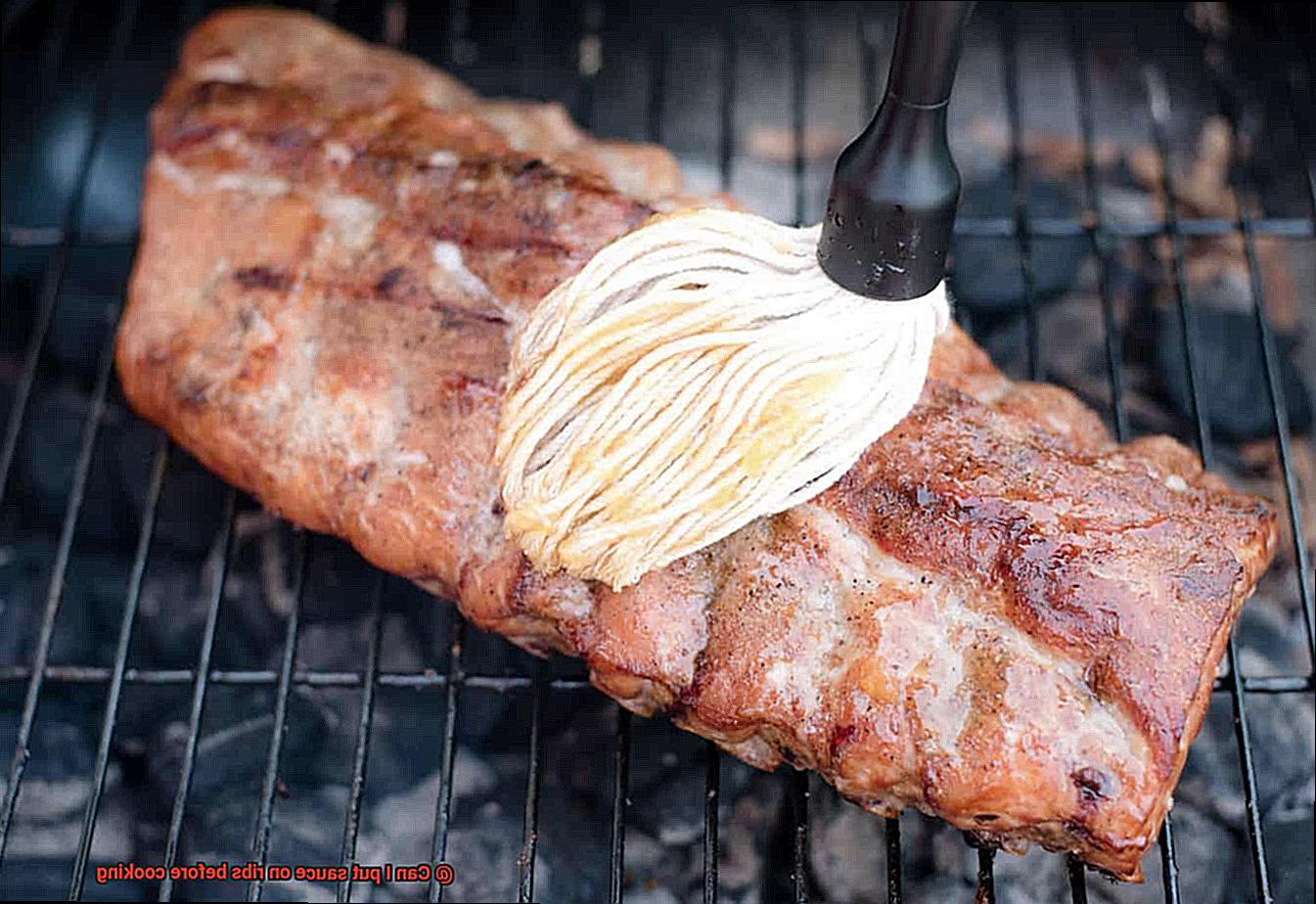
Hot Sauce – Adding a Fiery Kick:
For those looking to spice things up, hot sauces are an excellent choice. Made from chili peppers, vinegar, and spices, hot sauces provide a fiery kick to your ribs. When using hot sauces before cooking, consider the desired level of spiciness and the tolerance of your guests. Remember to use hot sauces sparingly to avoid overpowering the natural flavors of the meat.
Glazes – Sticky and Sweet Finish:
Glazes are often overlooked but can add a glossy finish and a touch of sweetness to your ribs. Made from ingredients like fruit juice, honey, soy sauce, and spices, glazes are best applied towards the end of the cooking process to prevent burning or caramelization. Brush them onto your ribs during the last few minutes of grilling or broiling for a sticky and flavorful coating.
Tips for Evenly Distributing Sauce on Ribs
Calling all grill masters. Are you ready to elevate your rib game to new heights? Achieving perfectly cooked and flavor-packed ribs requires mastering the art of evenly distributing sauce. Whether you prefer to sauce before, during, or after cooking, these expert tips will ensure that every bite is a mouthwatering explosion of flavor. So grab your basting brushes and get ready to take your ribs to the next level.
Prepare for Perfection:
Before applying the sauce, prepare your ribs for optimal saucing. Trim them to a uniform size and shape, ensuring consistent cooking and even application of the sauce. Remove any excess fat or membrane that may hinder the sauce from adhering evenly. This step sets the foundation for perfectly sauced ribs.
Start with a Thin Layer:
Instead of drowning your ribs in sauce from the start, begin with a thin layer. This allows the sauce to penetrate the meat, resulting in an even distribution of flavor throughout. Avoid thick coatings, as they can lead to uneven cooking and burnt spots that mar the perfection of your ribs.
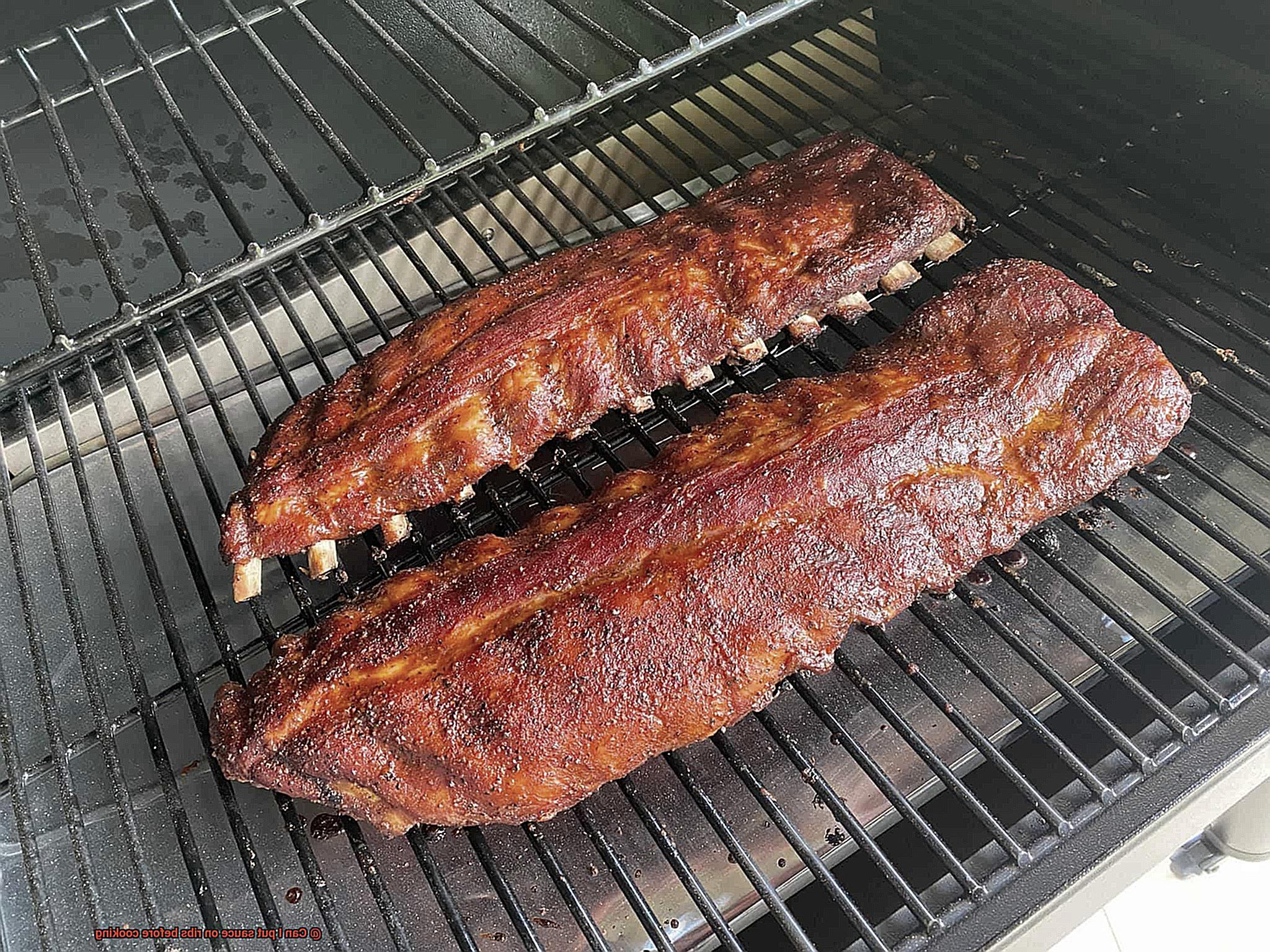
Choose the Right Tools:
To achieve precise control and even coverage, invest in a high-quality basting brush or silicone brush. These tools ensure that the sauce is evenly distributed without clumps or uneven patches. Say goodbye to haphazard coverage caused by spoons or ladles.
Bone Side First:
When saucing your ribs, start with the bone side first. This allows the sauce to seep into the meat as it cooks, infusing it with a more intense flavor profile. Once you have coated the bone side, flip the ribs over and apply sauce to the meaty side, ensuring complete coverage.
Layer Up:
For an extra burst of flavor and a beautiful glaze, apply multiple thin layers of sauce. Baste your ribs every 15-20 minutes during the cooking process to build up those delicious layers. Each layer adds depth and complexity to the flavor profile, making every bite an irresistible delight.
Mind Your Heat:
Pay close attention to your cooking temperature when applying sauce to avoid burning or charring. Lower, controlled heat is best to prevent the sugars in the sauce from caramelizing too quickly. Apply the sauce towards the end of the cooking process to avoid overcooking or burning, ensuring that your ribs are perfectly sauced and succulent.
Temperature Control When Applying Sauce to Ribs
Want to take your rib game to the next level? Let’s talk about temperature control when applying sauce to your ribs. Achieving that perfect balance of flavor, tenderness, and caramelization requires careful attention to temperature. In this blog post, we’ll explore why temperature control is crucial and provide expert tips to ensure your saucy ribs are a hit at your next cookout.
The importance of room temperature:
Before you slather on that delicious sauce, make sure your ribs are at room temperature. This ensures even cooking and prevents them from drying out or becoming tough. Take them out of the refrigerator and let them sit on the counter for 30 minutes to an hour.
Consistent heat source:
Whether grilling or baking, consistent and controlled heat is key. When grilling, preheat to medium heat and create direct and indirect heat zones. Sear the meat, then move it to a lower heat zone to finish cooking without burning the sauce. Baking in the oven? Preheat to around 325°F (163°C) for perfect caramelization and tenderness.
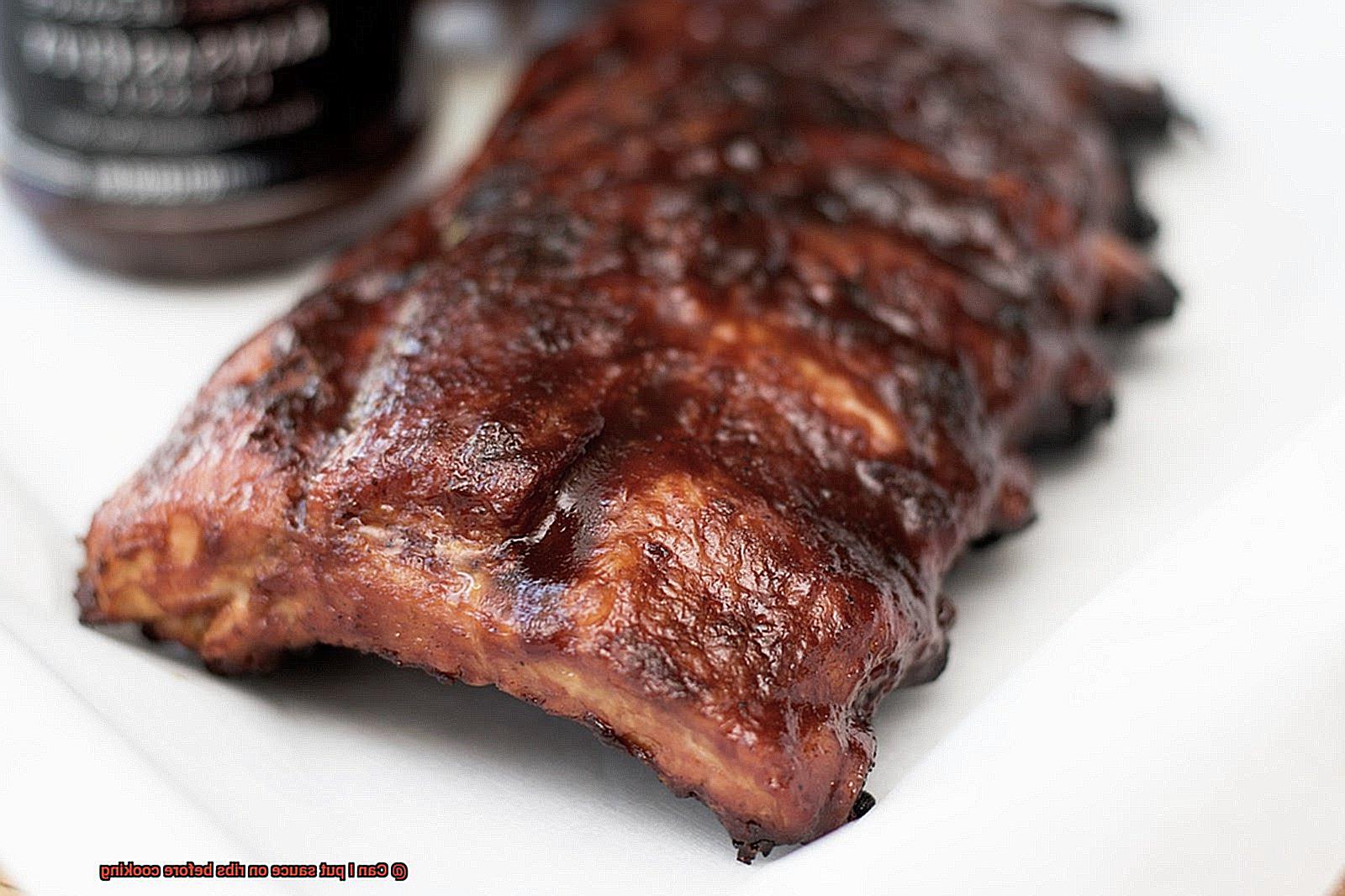
Room temperature sauce:
For optimal flavor and adherence, use room temperature sauce. Cold sauce can affect cooking time and may not stick as well to the meat. If using homemade sauce, take it out ahead of time. Store-bought? Warm it slightly on the stovetop or in a microwave-safe bowl.
How to warm store-bought sauce:
Using store-bought sauce? Warm it up without altering its flavor or consistency by following these steps: place in a microwave-safe bowl and heat in short intervals, stirring between each interval until desired temperature is reached. Alternatively, warm it gently on the stovetop over low heat, stirring frequently.
Pros and Cons of Applying Sauce Before Cooking
Then let’s explore the pros and cons of applying sauce before cooking. This technique can take your ribs to new heights, but it also comes with potential drawbacks. So let’s dive in and discover the mouthwatering advantages and the potential pitfalls.
First and foremost, saucing your ribs before cooking offers a multitude of benefits. The most significant advantage is the infusion of flavor and moisture. As you apply the sauce to the meat before cooking, it seeps deep into the ribs, resulting in a tender and succulent end product. This is especially crucial for lean cuts like ribs, which have a tendency to dry out during cooking.
But that’s not all. Applying sauce before cooking creates a delightful caramelized glaze on the ribs. As the sauce cooks, it thickens into a luscious coating with a rich, sweet, and tangy taste. This not only enhances the flavor of your ribs but also adds an irresistible visual appeal that will make your guests drool with anticipation.
Another advantage of applying sauce before cooking is the opportunity for customization. By marinating your ribs in the sauce beforehand, you have complete control over the flavor profile. You can infuse the meat with a tantalizing blend of spices, herbs, and other ingredients, creating a unique and personalized taste that caters to your preferences perfectly.
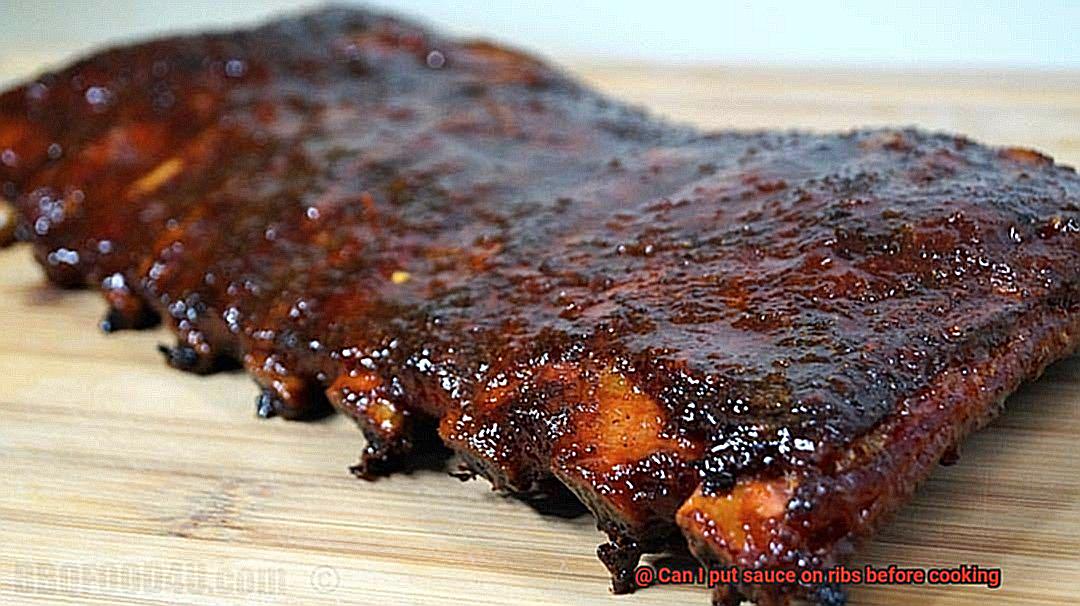
Let’s not forget about the time-saving aspect. By marinating your ribs in the sauce ahead of time, you can let them sit in the refrigerator for a few hours or even overnight. This allows the flavors to meld together beautifully while also tenderizing the meat. When it’s time to cook, you can simply transfer the ribs to the grill or oven without worrying about applying sauce during the cooking process.
Now, let’s explore some potential disadvantages of saucing your ribs before cooking. One of the main drawbacks is the risk of burnt or charred flavors if not done properly. Many barbecue sauces contain sugar or sweeteners that can easily burn when exposed to direct heat for too long. To avoid this, it’s crucial to closely monitor the cooking temperature and make adjustments as needed.
Another downside is the potential messiness of the cooking process. As the sauce cooks, it may drip and splatter, causing flare-ups on the grill or leaving a sticky residue in the oven. This can make cleanup more challenging and require extra attention to prevent accidents or damage.
Lastly, applying sauce before cooking may limit your options for adjusting the flavor during the cooking process. Once the sauce has been applied, it can be difficult to modify its taste, especially if you prefer a milder or less sweet flavor. Conversely, if you desire a stronger taste, adding more sauce without overcooking the ribs can be a challenge.
pke3i9dXMl0″ >
Conclusion
In conclusion, the great debate over whether to slather sauce on ribs before cooking has ignited fiery discussions among BBQ enthusiasts. The arguments on both sides are compelling, but the decision ultimately boils down to personal taste and desired results.
Dousing your ribs in sauce before cooking allows the flavors to seep into every succulent nook and cranny as they sizzle away. The result? A tender and tantalizing masterpiece that will have your taste buds dancing with joy. For an extra flavor punch, marinating the ribs in sauce for a few hours or even overnight can take things to a whole new level of deliciousness. And let’s not forget about that mouthwatering caramelized outer layer that adds depth and complexity to each heavenly bite.
Of course, there are naysayers who worry about scorching or charring the sauce if applied too early in the game. Their solution? Wait until near the end of the cooking process to slather on that saucy goodness. This way, it can glaze and cling to the ribs without sacrificing any of its delectable taste. Timing is everything here, especially when dealing with thick sauces that pack a sugary punch.
But wait, there’s more. There are alternative methods for applying sauce to ribs that offer their own unique flavor profiles and textures. From using a mop and flip technique to injecting marinades directly into the meat, or even creating a luscious glaze – you have endless possibilities at your fingertips. And if you prefer to keep things simple, serving sauce on the side or using dry rubs can still deliver mouthwatering results.
When it comes time to apply that saucy goodness, remember these key tips: low and slow is the way to go. Keep a watchful eye on temperatures to avoid any unwanted burnt surprises. And don’t forget expert advice on evenly distributing sauce for maximum flavor impact.
Different sauces behave differently during cooking, so it’s important to choose wisely. Save BBQ sauces for the end to prevent any unnecessary scorching. Be cautious with marinades due to their acidity levels. Dry rubs will give you a tasty crust on the outside, while hot sauces bring the heat and glazes provide a sticky-sweet finish.
Speaking of temperature control, it’s absolutely crucial when saucing up those ribs. Let them reach room temperature before diving into saucy goodness. Consistent heat sources are vital whether you’re grilling or baking your ribs to perfection.

